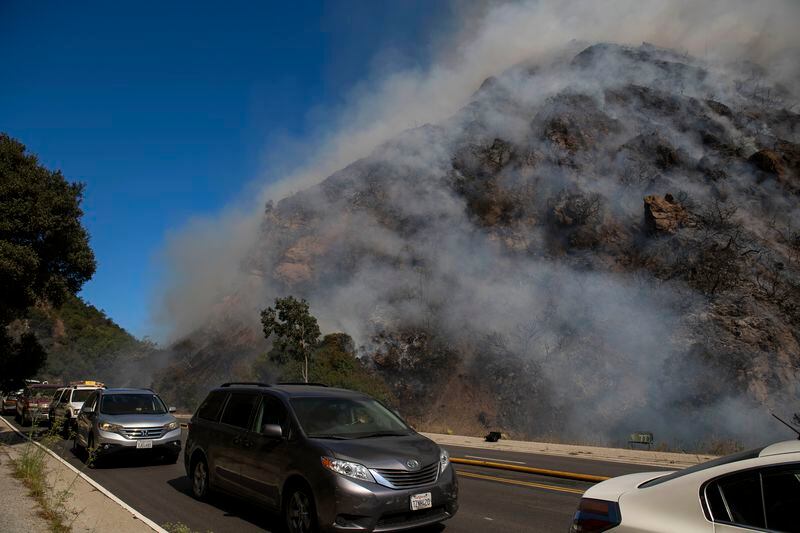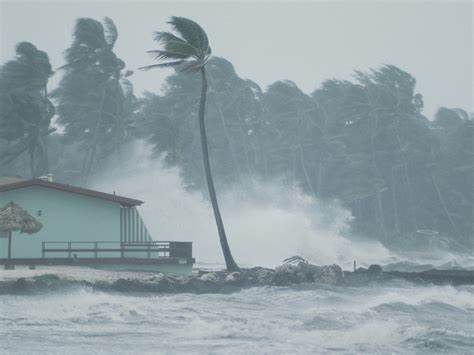California, already grappling with the aftermath of an “atmospheric river” earlier in the week, is facing a renewed threat of severe flooding, putting up to 37 million people at risk of life-threatening situations, according to warnings from forecasters. The atmospheric river phenomenon, characterized by heavy rain, snow, and strong winds, has the potential to cause widespread damage, including downed trees and power lines across the state.
The National Weather Service Bay Area issued alerts predicting “widespread” tree and power line damage in Monterey County, anticipating road closures and power outages with wind gusts expected to exceed 75 miles per hour. San Jose, in response to heavy rains in the Santa Cruz Mountains, ordered the evacuation of an unhoused community along the Guadalupe River due to potential swelling, posing risks to life and property.
This recent storm marks the second occurrence of an atmospheric river in the same week, with the earlier event causing downpours in the Bay Area, temporarily halting cable car services and impacting regions as far as Los Angeles and San Diego. The continuous onslaught of severe weather has prompted evacuation advisories in Santa Barbara County, urging residents to be on “very high alert.”
Door-to-door evacuation notifications have been conducted by sheriff’s deputies and search-and-rescue teams, emphasizing the urgency of the situation. Beaches across Santa Barbara County were closed indefinitely, highlighting the seriousness of the potential impact. California State Parks also issued warnings to the public to avoid ocean activities during the storms, especially at closed surf spots like Old Man’s at San Onofre Surf Beach, which experienced roadway erosion following earlier storms in January.

Read more:
- Trans Drivers Unable to Change Gender on Licenses in Florida
- Northern Lights Treat for New Mexico Residents!
- Razor Wire Presence Strengthened at Shelby Park in Texas
- NY Lawmakers Push for In-State Drug Production to Lower Costs
Forecasters anticipate dangerous flooding across the state through Tuesday, with estimated rainfall ranging from 6 to 12 inches. If the upper ends of these estimates are reached, records for both daily and monthly precipitation could be broken. Flood watches have been issued for several counties along the coast, covering areas from Sonoma and Marin to San Diego. These watches, indicating favorable conditions for flooding, extend from late Saturday afternoon through the end of the weekend.
The National Weather Service Weather Prediction Center’s update on Sunday underscored the risks of rainfall exceeding flash flood guidance, particularly in San Diego and Orange counties, with a “high risk” probability estimated at 70%. A coordinated response is underway, with over 8,300 state workers and more than 20 teams of swift-water and urban search-and-rescue personnel positioned across the state to address emergencies and potential damage.
The looming storm follows recent incidents where heavy storms caused significant disruptions and even fatalities. San Diego County Medical Examiner’s Office is investigating three deaths from late January in connection with the previous heavy storms. The region experienced its wettest January day on record, leading to rare and damaging flooding in urban neighborhoods.
Atmospheric rivers, like the one affecting California, contribute to over $1.1 billion in yearly flood damage on average, according to a 2022 study published in the journal Scientific Reports. The study also emphasized the impact of climate change, which enhances the intensity of storms by enabling the atmosphere to absorb more water vapor, resulting in more extreme precipitation. Rising sea levels due to global warming contribute to larger waves and faster erosion along the coasts, exacerbating the challenges faced by California in managing its changing climate.























+ There are no comments
Add yours